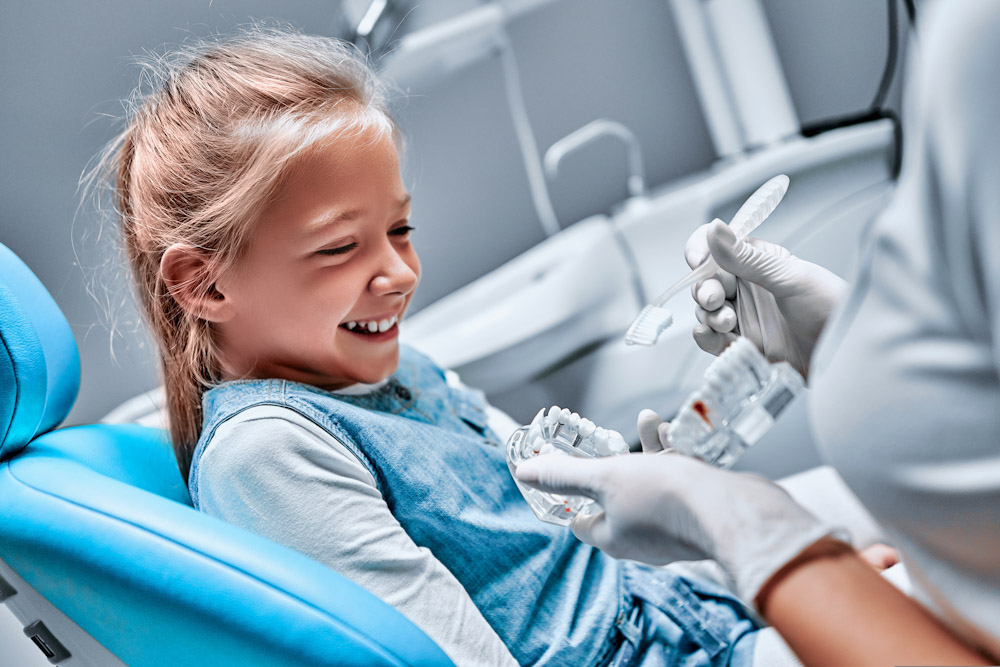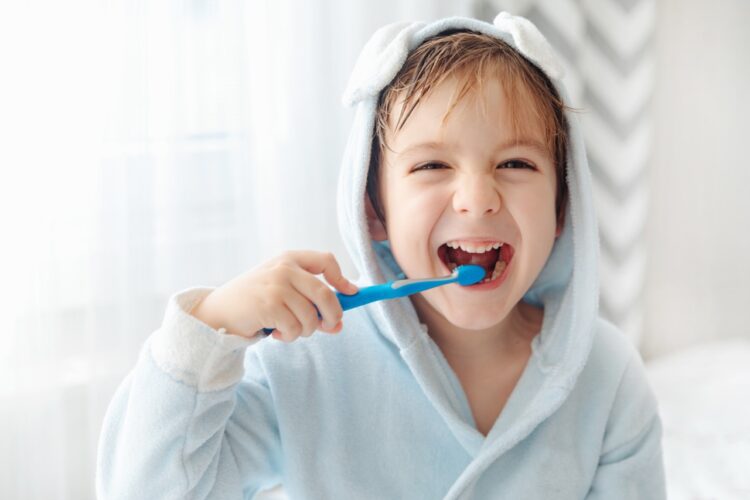According to the CDC, 20 percent of children aged 5 to 11 years old have at least one untreated decayed tooth while 13 percent of adolescents aged 12 to 19 have an unidentified cavity. Untreated cavities can cause pain and ultimately, infections that can negatively affect overall health. While tooth decay is preventable, it can’t be naturally reversed once it begins. For that reason and more, a biannual trip to the dentist is very important. Not only can a routine cleaning help identify existing cavities so they can be properly treated, but it can also help prevent them from forming between visits. Here are the basic parts of a routine dental cleaning.
1. Physical Exam
Yes, this is the part where your child is asked to wear a heavy lead apron and bite down uncomfortably on a piece of hard plastic. The dentist or hygienist will then proceed to place a scanner outside of the mouth and take a number of pictures. Towards the end of the visit, a dentist will sit down and examine the X-ray images. Cavities are detected and diagnosed when a dark spot or hole is spotted in the tooth. When such a gap is spotted, the dentist will most likely schedule a follow-up appointment to have the cavity filled.
2. Plaque and Tartar Removal
Here is a quick summary of terms:
Plaque: Plaque is a soft, sticky film that builds up on teeth when bacteria mixes with saliva and food.
Tartar: If plaque is not removed (by brushing and flossing) it will harden and form a layer of tartar— also known as calculus. In most cases, tartar will need to be removed by a dental health professional.
With specialized tools and techniques, the dental hygienists will remove plaque and tartar buildup. If ignored for too long, such buildup can cause gingivitis, and ultimately, periodontal disease.
3. A Quick Brush
At this point, the dentist will have your child select their preferred flavor of toothpaste and proceed to brush their teeth thoroughly. This will help to break up any lingering plaque in between teeth or along the gumline. After brushing, we will often ask your child about their brushing habits and explain proper brushing techniques for a happier, healthier mouth.
4. Flossing and Rinsing
Now for one of the most important steps in the process. Of course, our dental health professional will floss between each tooth and access all the hard-to-reach areas, but they will also educate children on the importance of flossing. Regular flossing is one of the best ways to combat tooth decay. Children who develop consistent flossing habits early on are far less likely to have cavities or other dental problems in the future.
5. Flouride for Lasting Protection
Fluoride is a mineral in your bones and teeth. It’s also found naturally in the following:
- water
- soil
- plants
- rocks
- air
Fluoride is used to help strengthen tooth enamel which is the hardest substance found in the human body. Though extremely hard, enamel wears over time and needs to be reinforced. Fluoride treatments help to rebuild weakened tooth enamel, slow down mineral loss, as well as prevent the growth of harmful oral bacteria. We recommend that you and your child use toothpaste fortified with fluoride. This will help keep teeth strong between visits.
Timp Dental: Your Dedicated Utah Pediatric Dentists
When it comes to mingling dental expertise with child-focused care, there is no better clinic than Timpanogos Pediatric Dentistry. Our educational approach teaches and motivates young patients to keep their teeth healthy, avoiding tooth decay that can damage their smiles. For more information on tooth care, or to schedule an appointment, contact us today!





